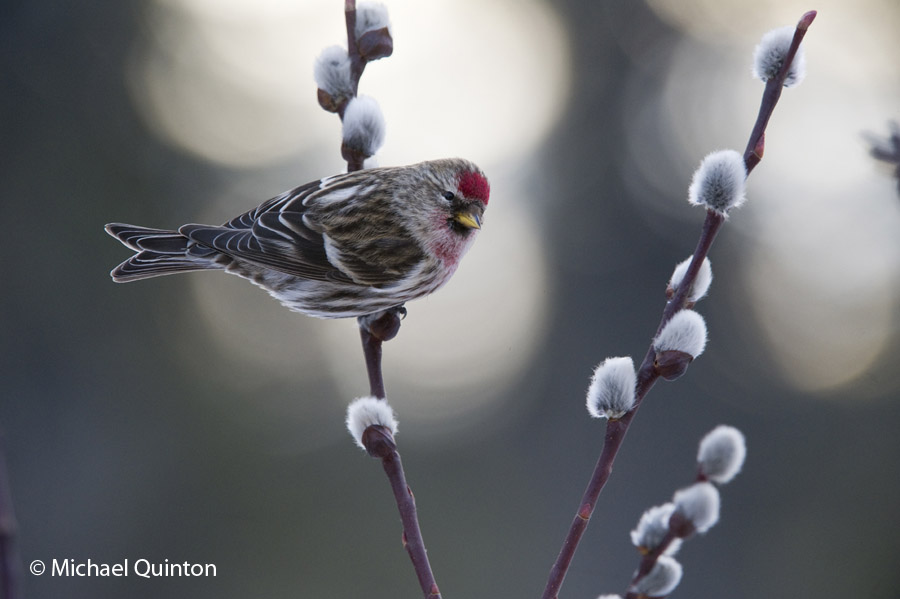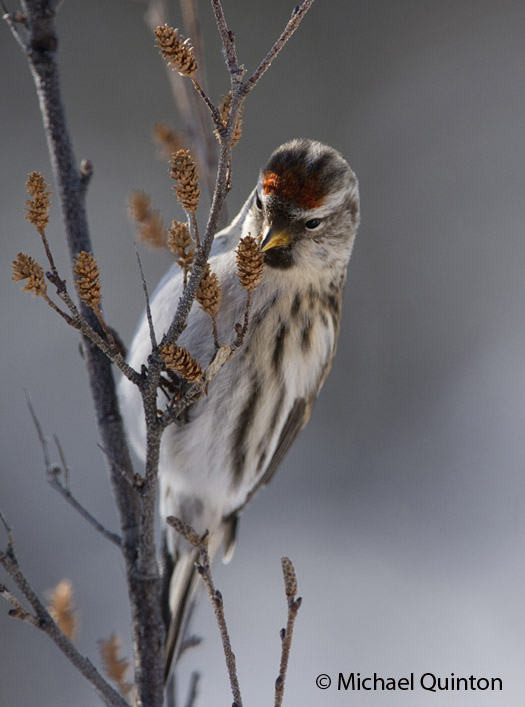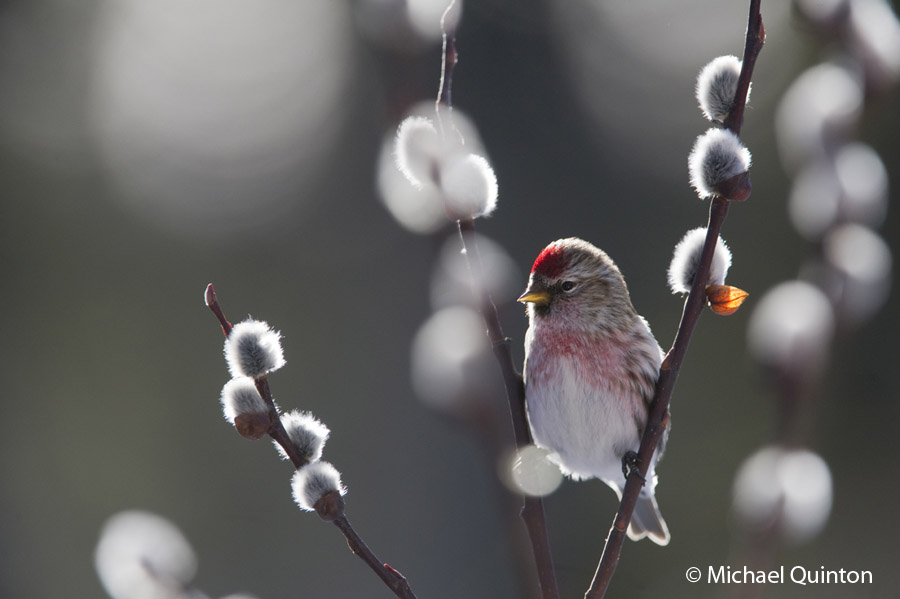 On my last post I laid out a way to get close-up photographs of the very small and beautiful common redpoll. By setting up a feeding station early in the season you can get redpolls to come to you.
On my last post I laid out a way to get close-up photographs of the very small and beautiful common redpoll. By setting up a feeding station early in the season you can get redpolls to come to you.
Attention to a few photographic details can help you to get professional results. First, you’re choice of a location is very important. Some locations are more photogenic than others, obviously. Avoid situations that are complex. For example if your location is too thick with brush and vegetation then there will always be something in the way, branches, twigs, between you and your subject. Often, it is these kinds of distractions that can ruin an otherwise nice photo.
You need to get close. But being very close brings on new problems. Your depth of field at five feet (the distance you need to fill the frame with a redpoll using a 560 mm telephoto lens) is mere fractions of an inch. Shooting wide open (using smallest aperture number such as F 4) can leave you with redpoll photos with eyes sharp but beak out of focus. I try to use F 8 to gain a bit more depth of field. But, of course, by using an aperture of F 8 instead of wide open F 4 you will have to shoot two shutter speeds slower. To compensate for slow shutter speeds, I raise the ISO to 800 or even higher under low lighting conditions. Make a few test shots with higher ISO settings to see if your camera can handle it. Older digital cameras may turn grainy if you go above ISO 560.
Female redpoll feeds on the tiny seeds of alpine birch, a common shrub in Alaska’s Interior.
Shooting a lot of pictures is a must. I am using shutter speeds mostly from 1/125 of a second to 1/500 of a second so even with a rock solid tripod I get plenty of blurry and out of focus photos. Most of these blurry images are caused by the bird being in motion, not camera movement. Redpolls and most other very small birds rarely seem to hold still. I continually adjust my ISO to keeping it as low as possible but also allow high enough shutter speeds/ F 8 combinations.
I spent at least 100 hours photographing redpolls during March. Enough time for opportunities under different lighting conditions.


